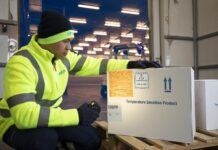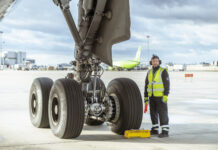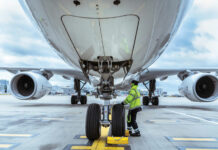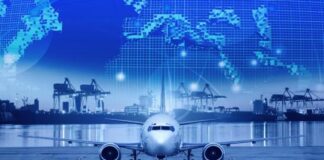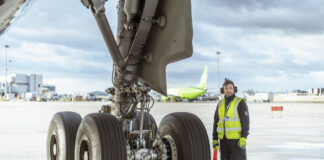

A report by sustainable aerospace experts at Atkins, a member of the SNC-Lavalin Group, warns achieving 2050 net zero targets in the sector will require major sustainable energy and fuel production infrastructure changes if commercial air transport grows as currently predicted.
In the white paper – Alternative Fuels for Sustainable Aviation – Atkins emphasises that the journey to net zero extends far beyond aircraft emissions. Acknowledging that the most effective solution to decarbonising the aviation sector will be using a mix of alternative fuel options – SAF, eFuel, Hydrogen and batteries – the report warns that the industry also needs to be prepared for the significant infrastructure implications brought about by utilising this mix of alternative fuel. It also highlights the significant impact on future energy demand required to produce them.
Based on estimated energy efficiencies and this forecasted fuel mix, Atkins’ predict 44,000 TWh of energy per year will be required by 2070 to generate the necessary global aircraft fuel demand. This represents a 5700% increase from current aviation energy generation requirements and is almost double the world’s current electricity demand.
The report goes on to stress that the scale of change required will be substantial and far more complex than systems currently in operation. Alongside energy generation, other considerations will need to be factored into future plans, from fuel transportation and storage requirements to vehicle charging infrastructure.
Andrew Caughey, Sustainable Aviation Lead – Aerospace, Atkins says: “Aviation emissions are hard to abate, but not impossible. The sector is making huge strides in its efforts to accelerate the development of new fuels and aircraft that will help deliver zero emission flight. These advances have a wider impact beyond the aerospace industry. Whilst the future mix of low carbon alternative fuel is yet to be determined, the production, storage and transportation of fuels has implications for energy and airport infrastructure and their emissions need to be considered across the whole lifecycle, from ‘source to force’.
“Regions, governments, airports and the wider industry must adopt a holistic approach to scenario modelling when creating masterplans for the infrastructure and ecosystems that will drive the future of sustainable aviation. By understanding the full fuel mix and energy demands for sustainable aviation, governments can use the insight to inform their policy makers and actions – whether that be introducing emissions KPIs, green fuel subsidies, demand management or investing in innovation and development. Integrated system-level planning is vitally important in achieving the transition and must take into account future energy predictions.”
Atkins used analysis and modelling based on the sector’s current growth trajectory, future energy demands and energy generation efficiencies to explore the implications for aviation in achieving net zero. This included creating scenarios to explore the potential contribution of each alternative fuel, based on the energy demands of different aircraft classes.
Atkins modelled a low and high energy generation scenario to forecast potential energy requirements – from a low scenario of 35,700TWh per year fuelled primarily by SAF and hydrogen to a high energy scenario of 54,400TWh per year, where synthetic eFuel is more dominant in narrow- and wide-body aircraft.( See Fig 1 in notes to editors).
READ: DHL unveils sustainability milestones and a new tool at industry-first global summit
This scenario modelling is based on global demand, but can be applied to any geographic region or specific airport to determine energy supply and infrastructure requirements. By adding in any changes to fuel mix or legislative demands, the model can forecast the generation energy requirement and identify the relative need for SAF, hydrogen, eFuels and batteries.
The Alternative Fuels for Sustainable Aviation report goes on to explore the viability and availability of low carbon fuel sources and how this will change over time. Key outtakes include:
· Blended approach – no one technology is feasible alone. To use 100% eFuel would require energy generation of 63,000TWh per year, and while using battery power would require only 20,000TWh of energy generation per year, the limitations of battery technology would make this impossible over the time horizon considered.
· Availability of energy and volumes used – Volumes required will be largely influenced by the alternative fuel route being followed and the availability of said fuels, which remains uncertain. Producing the quantities required will be a substantial challenge. The only certainty is that demand for all types of fuel will be significant. (See Fig 2 in the notes to editors for a breakdown on the viability of each fuel type)
· The impact of innovation – The combination of low carbon fuels used will change over time as technology develops. For instance, battery technology could see a breakthrough in power density, making it more viable for larger aircraft classes earlier. Moreover, the capacity to generate eFuel at higher volumes could reduce the need for SAF sourced from waste products. Breakthroughs in aircraft technology supporting hydrogen powered flight could lead to an accelerated roll-out of hydrogen into widebody aircraft.


